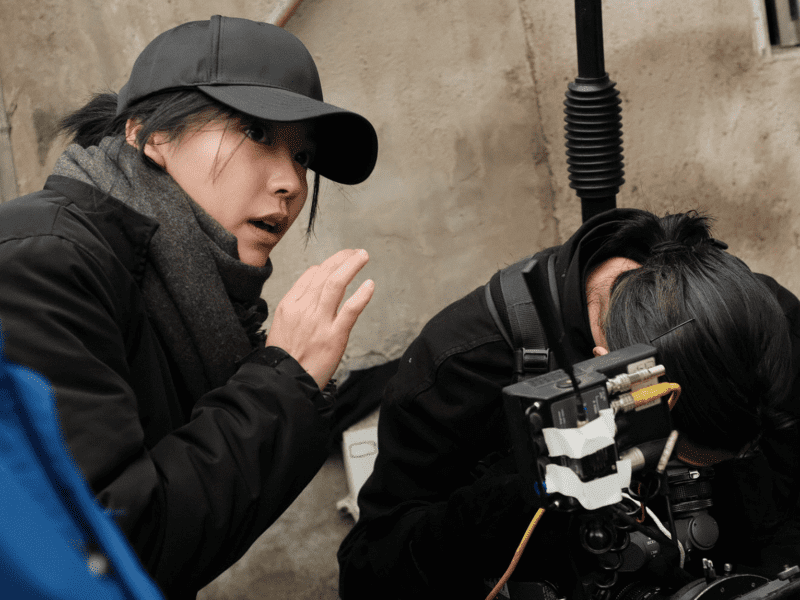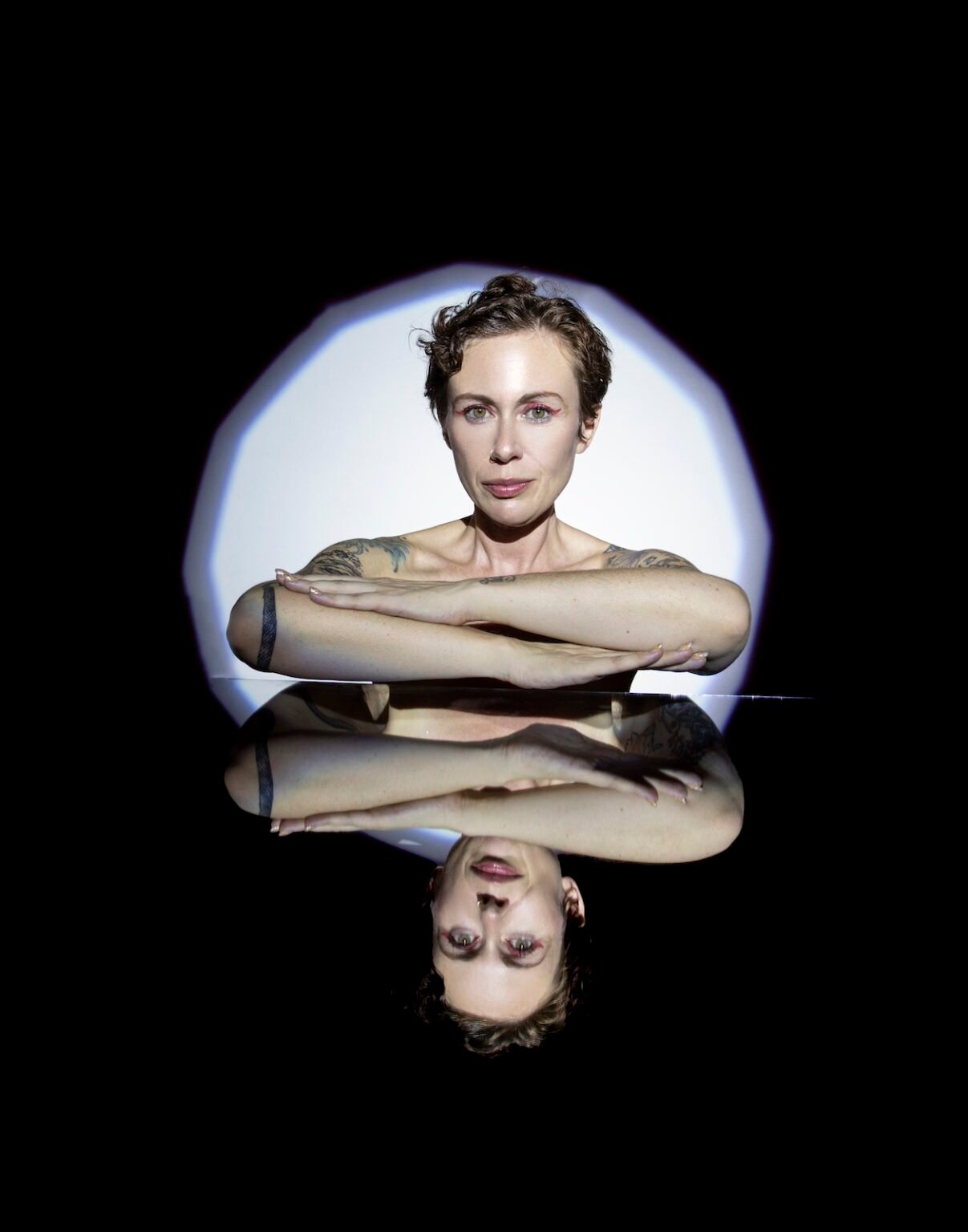
“What I really want to do is direct” Frances Daisy Levi talks content, curation and creation
Out of all the jobs in the world, why did you choose to be a director?
I was brought up on classic old Hollywood musicals, and my favorite was Singin’ in the Rain, whose comedy plotline of making a movie just fascinated me.
I was that kid who’d rather stay in and watch movies than go out and play with friends. My family was loving, but we had our share of health issues that followed me through childhood. I’d escape into the world of movies and let my imagination run wild.
Coming from a humble Northern English immigrant background, the idea of making movies for a living never crossed my mind. I was told to pursue something stable and dependable. I studied English and ended up working in arts marketing, where I could be creative.
Then in 2008, the UK faced a financial crisis, and my job funding got cut. A friend, Steve Allison, who ran a record label and live music venue business, mentored me. Steve taught me everything about running events and festivals; I even directed videos for the parties we worked with.
Eventually, I left that role and moved to London to curate a massive art space, where I got my chance to direct music videos. After that experience, I knew that directing was what I wanted to do with my life.
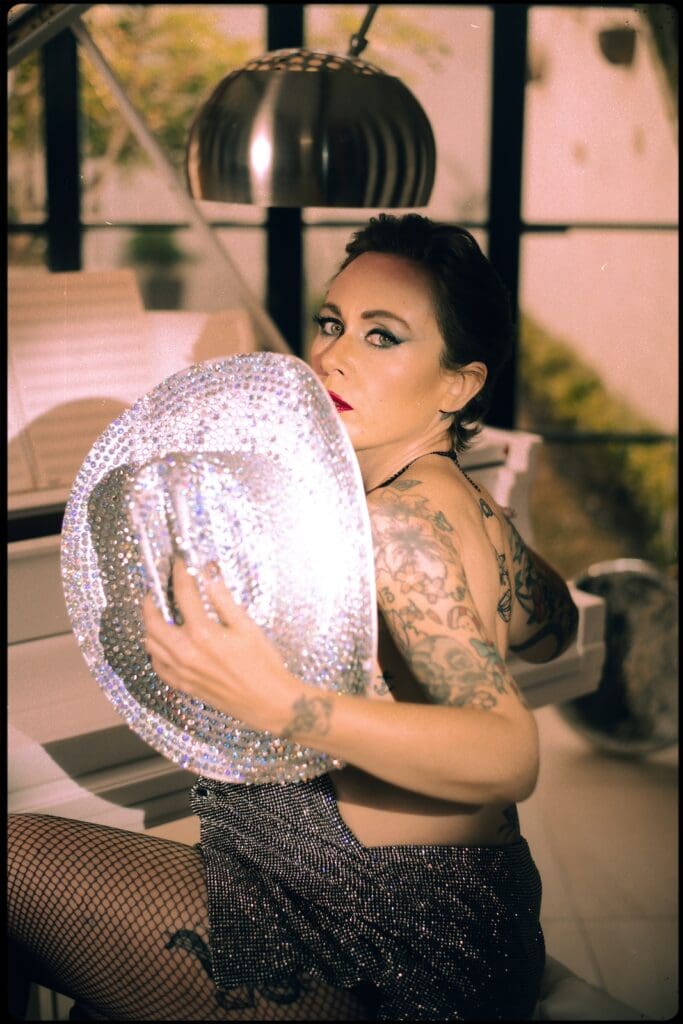
Tell us about your path. How did you work towards getting your first director credit?
I had no connections, no opportunities, and certainly no real money to speak of. So, the only path I could follow was to earn my stripes by directing and assisting wherever I could within the context of my work. I didn’t have a spare $200,000 to enroll in a USC master’s degree program, nor did I have the luxury of time to secure loans for further education. Instead, I enrolled in an evening class at a community college, studying directing and photography, and voraciously devoured every piece of literature on the subject that I could get my hands on.
In my workplace, I concocted reasons to create videos and even volunteered my services to friends, while pitching creative ideas to strangers. I was already working as a producer for music events, giving me access to artists and content creation opportunities. (This was in the days before Instagram Stories took over.) I realized that to create my own content, I needed to excel at producing. So I immersed myself in production, accepting any role I could find.
I worked on some truly insane gigs, often enduring 22-hour days. I’d produce anything and everything, from the mundane to the extraordinary: horse races, seasonal popups, charity drives, telethons, and of course the types of projects I loved, like music festival stages, indie movies, film festivals, and movie & music awards ceremonies. If it could be produced, I produced it. I saved most of my wages and dreamed of starting my own production company.
About seven years ago, I faced a major health setback when I fell ill with endometritis. My doctors cautioned me to slow down, warning that working on sets round the clock would only worsen my condition. That’s when I embarked on the journey of creating the magazine you’re reading now. Building a magazine from scratch without any financial backing, relying solely on the support of a very understanding business partner, was one of the most challenging endeavors I’ve ever undertaken. I reached out to anyone I thought might advertise with us, started writing, and didn’t stop. At the peak, I was writing twelve articles a day all while handling sales, design, growth, and partnerships.
After years of relentless effort, I managed to raise the funds to film my first TV series, The Fundamentals of Vogue. The two years I spent on that project were undoubtedly the most stressful of my life. While I’m content with the content we created, I sometimes wish I’d been stricter about quality during our on-location shoots. But then, I also recognize that it was meant to be a fly-on-the-wall documentary, and part of its charm lies in its raw, unfiltered footage.
I did things the hard way, rejecting other people’s money and raising capital for the shoot from my own business to cover all expenses. Mornings were filled with sales calls to secure deals so we could afford the afternoon’s shoot. The fate of the show remains uncertain as I navigate the complex world of distribution. What I do know is that I had the privilege of enjoying complete creative freedom because I chose to take the challenging path and rely on myself and my partners.
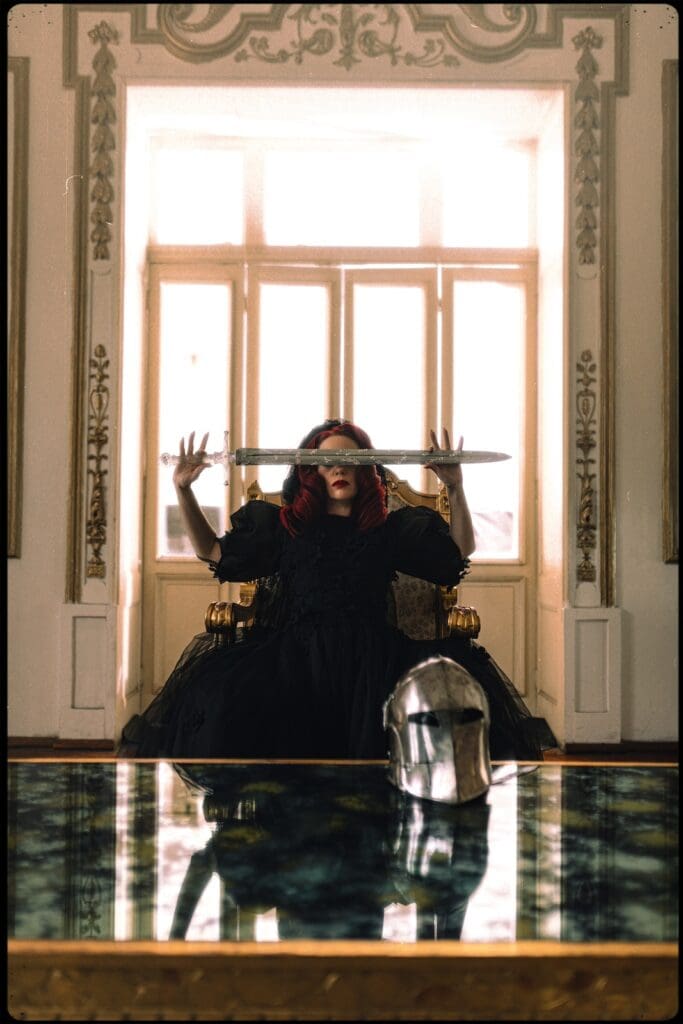
What’s the hardest part of being a director?
The most challenging aspect of this journey is establishing clear boundaries and safeguarding yourself while maintaining fairness & presence with your team & cast. I’ve always been inclined to please people and genuinely want everyone to be happy. However, it’s been a real struggle for me to assert myself clearly and set the necessary boundaries on set. I learned this lesson the hard way when I hired a team (who are undoubtedly talented professionals) that wasn’t the right fit for my project, which led to a legal dispute.
After that unfortunate incident, I decided to make significant changes in how I communicate with my team. It goes against my natural inclination to be authoritative, but I realized that as the director the ultimate responsibility rests with me. I had to lay down the law on set to ensure everyone’s safety and the success of the project. It’s a tough lesson to learn, but sometimes you have to be firm for the sake of the entire production.
When it comes to producing, what’s the easiest part for you?
I’m a natural-born producer, and I have a genuine passion for the art of production. However, one of my ongoing challenges is maintaining a tight grip on the entire team and ensuring we stay on track to meet our goals & deadlines. It’s essential to foster a positive, cohesive team atmosphere, but one can’t forget the pressing constraints of time & budget. Striking the right balance between building friendly relationships with the team and assertively pushing them to get the job done is a constant tightrope walk.
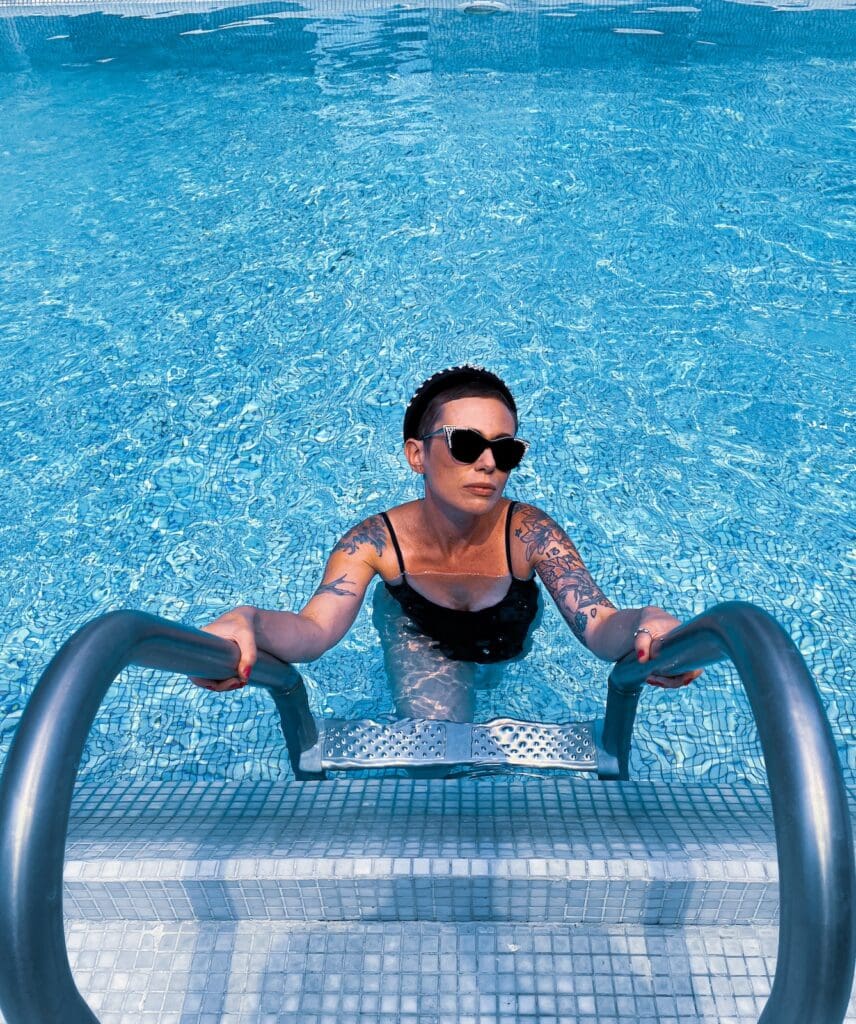
What challenges do you encounter most while producing?
Time management issues with others involved in a project. It’s so frustrating and also easily avoidable, even with traffic or other typical delays.
What tips do you have for new producers starting out?
Build a strong group of creatives around you who all have flexible skills but provide support in areas you lack. Like John Waters and the Dreamlanders, build a team you trust, and you’ll always be supported. Hire the right editors with the right experience for the project. The type of content I make is very fast, but I hired editors who’d worked on motion pictures. Going forward I will always remember “the medium is the message”: I have more in common with people who make TikTok videos than those editing movies.

As a director and storyteller, how do you start work on a new project?
For documentaries, because I am a journalist, I always start with the news. If something inspires me, I check the trending searches (SEO) and bookmark the stories. If I can’t stop thinking about that concept a month later, I start soft outreach to advertising partners to ask if that’s a topic they’d be interested in working with.
My shows The Fundamentals of Vogue and Salsa Sana started with my love of the topics. If I’m totally immersed in something and I see there’s a community that interests me, I think, “Well, why not interest the world?” These projects have been a huge gamble; let’s see if they pay off.
What comes first: the story or the casting?
For me it’s always a story, but with The Fundamentals of Vogue I wanted to put my creative partner Dionicio Guillén Soriano front and center of the music video segments because he moves his body so well, and the world needs to see that.
Salsa Sana came out of nowhere because a commissioner friend asked us to elaborate on an Instagram reel, and we had nothing better to do than dance salsa during the pandemic.
I wrote the scripts for the Sinderela short films in my head five years ago after reading an article about sex trafficking in Cancún. I related that horrible story to my life experience: I’d got to know some members of the “cult” OneTaste and heard these awful stories about how they’d essentially allowed the founder of that organization to control their sex lives. My beautiful sex therapist friend Amie Nicole was murdered by an insane ex-boyfriend some years ago, so I wove these stories into their narrative about the horrible things happening with tourists & sex workers in Cancún.

You’ve been known to work fly-on-the-wall, run-and-gun style; what’s the hardest thing about producing off-script?
Keeping the visual quality up to standard (lighting, angles, etc.) while also acting and performing for the camera is the hardest thing about shooting a run-and-gun. I solved these issues by building my team of trusted DOPs who keep working till we get the perfect light. When you have a good DOP you can rely on, it becomes easy to be creative.
You often feature in your projects. What’s behind that decision?
I love to perform and am also good at it – but it was more about money & time. It was easier to do things with our small team during the pandemic, and viewers liked what we made. As the budgets and buyers grow in stature, I know I can’t continue to be all things to all men – but right now I’m enjoying being a Jill of All Trades.
What’s the hardest thing about directing and acting at the same time?
Not getting stuck in your head when you have a dozen people asking you things about the production and you need to perform. I often want to go and move a light or adjust a camera but can’t when I’m the one in the scene.
How do you get the best performance from yourself and your cast & crew when you’re on screen?
I like to give very clear direction including detailed camera angles and lighting references, and my performers know what I want before they walk on set. My secret to getting the shot is to be clear about what is needed, but also flexible: if something’s ad-libbed or some lighting looks magic by accident, I lean into it. However, I never forget what I needed in the first place. Get your script in the can, then you can play all you want.
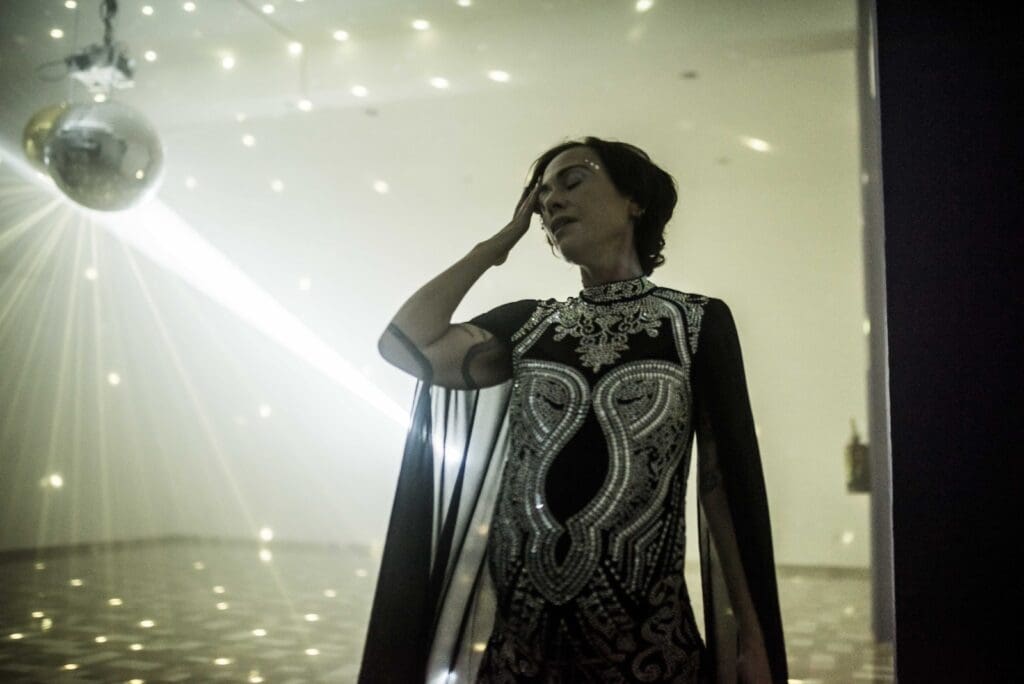
What’s a memorable experience or moment when being a director and actor added a distinct flavor to one of your projects?
I really enjoy the situations where I hire performers and am directing them, and then I jump up and sing or dance or fix a camera shot to show them how I imagine that take will go. They then treat you with so much more respect, because they realize you can actually do things.
From a creative standpoint, what advantages come from having a director who’s also an actor within the same project, and how does it impact the overall narrative & character development?
I get to see and watch everything, so my character is informed by the whole project including what goes on behind the scenes. I’m always writing from a meta-movie-within-a-movie viewpoint; I just soak up everything and alter my performance based on the situation.
What’s next for Frances?
Building my own channel, Bingewatch; getting medical treatment for endometritis; singing & dancing & spending more time with my human family, which is much needed and if I say so myself, also well deserved.
What is your dream project that you can’t afford to produce, but hope one day you can?
I want to make a movie musical every year for the rest of my life and have them shown in theaters around the world.
In ten words, tell the next generation of filmmakers something to inspire them.
The barriers to entry are lower than they have ever been. If you can think of it, you can film it. Get out there and be a creator – not just a talker.







